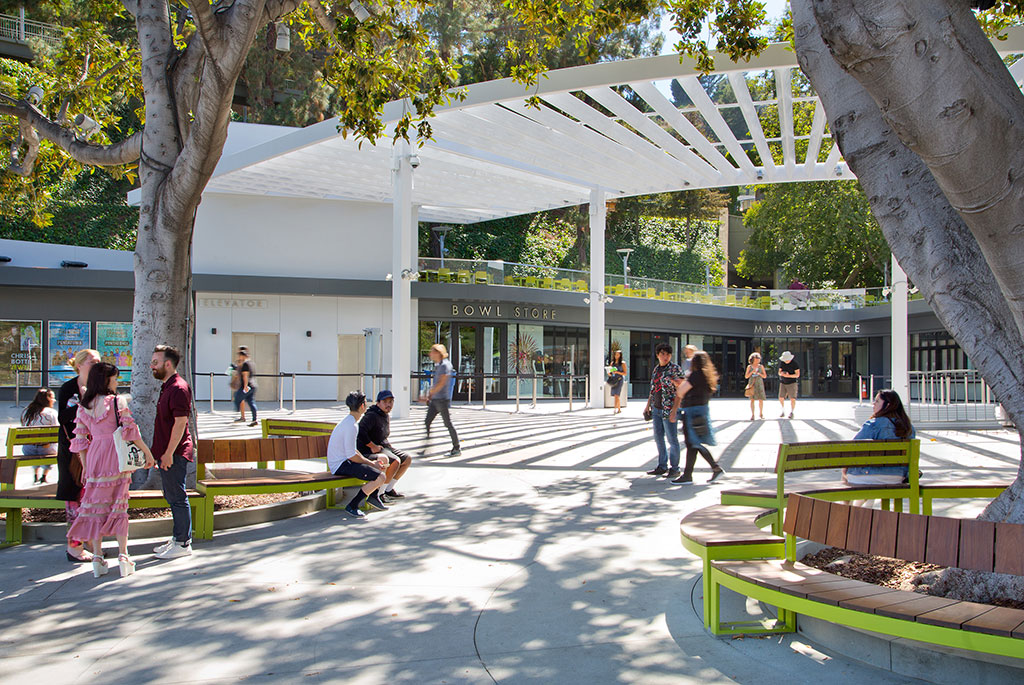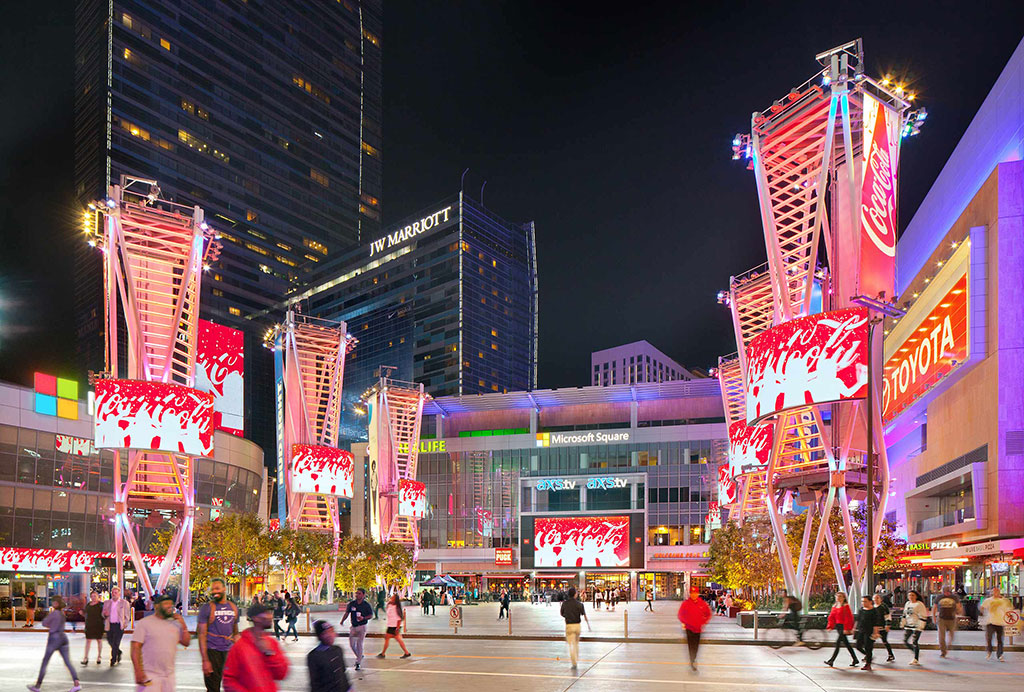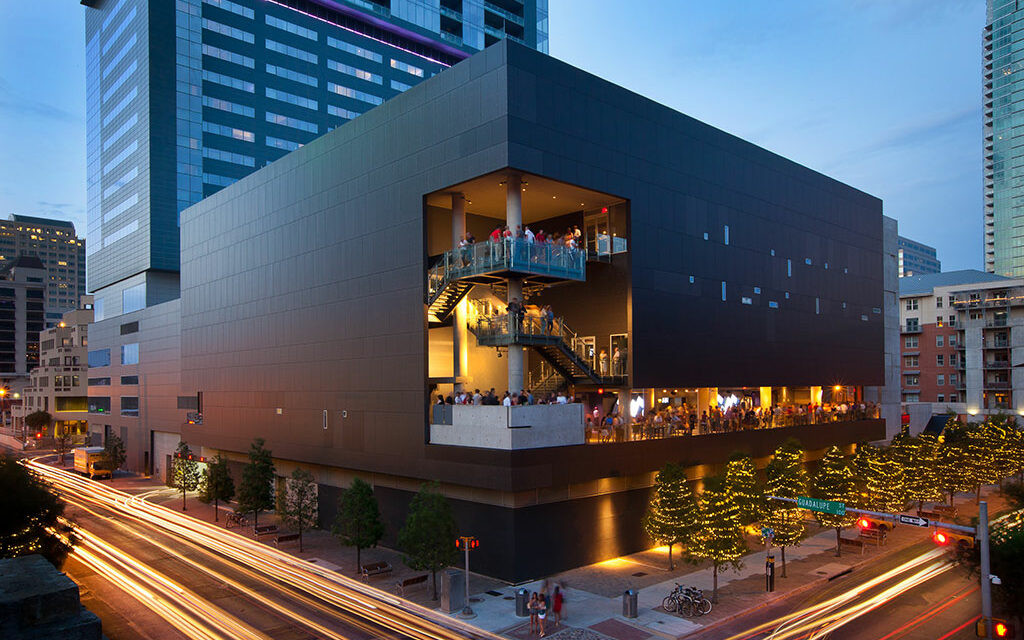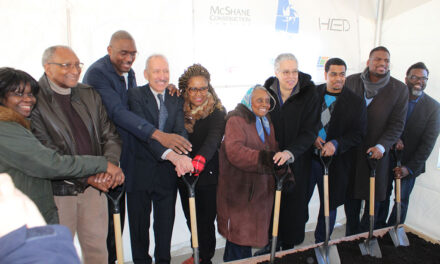Julie Smith-Clementi AIA, IDSA, ULI, and Frank Clementi, FAIA, AIGA, have announced their new firm, Smith-Clementi, offering the full spectrum of place-based design from acknowledged leaders in their fields. The places crafted by Julie and Frank have had transformative impacts in Southern California, nationally and abroad. Their award-winning work encompasses education, parks and plazas large and small, re-imagined commercial and retail space, residences, and something more personal: artful product designs for the home. The duo recently left their design firm Rios Clementi Hale Studios to work more directly with clients and end users on broader place-based design.
Julie and Frank’s most high-profile projects include beloved venues that invite the sharing of life, art and joy. Some of the most notable include The Hollywood Bowl, The Music Center, The Greek Theatre, and Austin City Limits.
“I find the greatest satisfaction in creating urban experiences; places where people come together in a community,” said Julie. “My long work at the Hollywood Bowl, for example, where thousands of people share a space over several hours, has given me a keen understanding of brand, performance, and place, with a healthy dose of logistics. I look forward with both renewed focus and breadth to envision rich and authentic places that celebrate all people.”

Julie Smith-Clementi and Frank Clementi. Photo by Steven Eikelbeck
Said Frank, “I’ve joined my partner Julie Smith-Clementi to work on exactly the direct design collaborations that we’ve found most meaningful. From plates to parks, we’ve engaged the full spectrum of design. Our new firm allows us more agility to continue to envision unique and meaningful places for the diverse communities we love.”
The consumer product lines they’ve founded – the best known is notNeutral – are part of the Smith-Clementi comprehensive approach, touching all aspects of design. At the same time, their largest projects succeed on multiple levels by incorporating the best thinking from themselves and their partners across many disciplines, from the operationally practical to the visually compelling.
Their buildings and spaces have been continuously recognized with more than 20 AIA Design Awards and have been featured in over 300 publications. Under their leadership Rios Clementi Hale Studios was chosen as California Council’s 2007 AIA Firm of the Year.
Julie Smith-Clementi: The Orchestration of Expertise
Julie leverages entrepreneurial experience and energetic leadership to guide complex teams and realize shared visions. The resulting holistic environments unite Julie’s passions for buildings, spaces, landscapes and objects, and seek the best means to express design ideas. This “disciplinary agnostic” approach curates exceptional talents, challenging them beyond their usual expertise to create experiences specific to the client and the end users.
For over 30 years Julie has been integral in the development of award-winning projects. Among her transformations is The Hollywood Bowl. Over a 10-year span, working between seasons, Julie and her team enhanced every user experience at the legendary venue: renovating the classic, 1940 Streamline Moderne entry fountain; improving access to and updating comfort at every restroom; re-envisioning all the furniture, from picnic tables to box seats; adding parklike lighting throughout. A revived box-office and plaza, a new artists lounge and new campus security center were major building additions performed in concert with the character and civic significance of The Hollywood Bowl.

Hollywood Bowl. A renewed entry experience including revised ticket sales, marketplace, and branded gift store, with expanded rooftop picnic terrace. Photo courtesy of Smith-Clementi
“This marriage of craft with ideas embodies our full-spectrum approach,” said Julie. “It is achievement on a grand-scale, but one that also touches the senses and memories of all its visitors.”
Julie’s embrace of public space recently extended to re-envisioning Horton Plaza, architect Jon Jerde’s famous 1985 retail environment in San Diego. In repositioning the place from a respected but struggling shopping mall into a tech workspace hub, her expansive approach, including landscape design, was essential, as the proposal incorporates a public park as a force for community revitalization and acts as a generator for the public promenade.
Frank Clementi: A Holistic Method
Frank Clementi broadens design with innovative projects and transformative teaching – integrating architecture, landscape, graphic and product design. Frank’s award-winning solutions explore meaning, materials and forms, taking inspiration from the place and culture of each site and its inhabitants. Frank was elevated to the American Institute of Architects College of Fellows in 2017 for his broad contributions to design.
Frank’s approach descends, in part, from his residency in Milan from 1984-86. Here he joined Memphis Group founders Ettore Sottsass and Matteo Thun in conducting aesthetic experiments with ceramics, graphics, products, and architecture. Among the results was a traveling exhibition of hypothetical skyscrapers, originating at Vienna’s Academy of Applied Arts. Frank returned to work with Hodgetts+Fung, where he met Julie, and they contributed to the highly influential exhibition Blueprints for Modern Living: History and Legacy of the Case Study Houses at Museum of Contemporary Art, Los Angeles.
After joining his partners to found RCH Studios, Frank further established his cross-disciplinary method in the Warner Bros. Children’s Center. Frank’s holistic method blended indoor/outdoor classrooms within a playground landscape and synthesized signage, custom lighting and scalable furniture, setting performance and design standards for childcare design across the industry. The building was recognized with several awards including a National AIA Honor Award.
Frank’s inclusive approach to civic projects range in scale from the 11,000-square-foot Sunset Triangle Plaza (reclaiming a street for pedestrian vitality), to Grand Park Los Angeles and L.A. LIVE’s Microsoft Plaza. For a primary school in Los Angeles’ Little El Salvador, Frank’s empathy of the cultural context and his understanding of building systems provided the children with spatial delight while harmonizing the school with its community. The project won a National AIA Honor Award, the jury noting, its “Everyday architecture fashioned intelligently from inexpensive materials.”

Microsoft Plaza at L.A LIVE. Photo courtesy of Smith-Clementi
A defining characteristic of Frank’s work is its ability to speak to a broad audience. “What we do needs to matter to both our mentors and our mothers,” he says – an aspiration for design to be layered, sophisticated, accessible and socially relevant.




